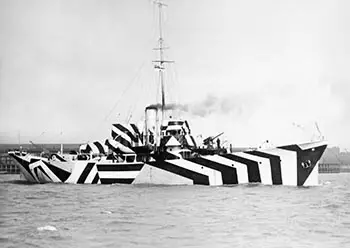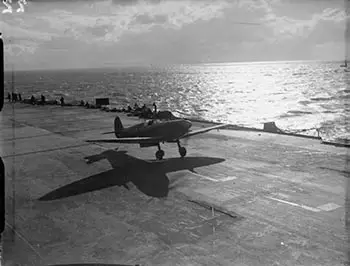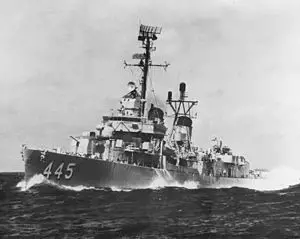World War II Ships
Changes to Ships During World War II
During World War II many changes were made to military ships. The ships began to use diesel engines, submarines were added to both Axis and Allies’ fleets, SONAR became more widespread, and ships became stronger and faster.
The vast waters off of Europe, in the Pacific Ocean, and even near the Unites States were arenas for many battles and spy maneuvers. The ships of World War II can be broken down into six different categories:


Battleships and Battle cruisers
Battleships and cruisers played an important part in the navy of those countries involved in the war. This role was more significant at the beginning of the war before air advancements were made in the military.
A battleship is defined as a heavy ship covered in strong armor. It also has big guns on it such as one that might be able to hit something as far away as 40 statue miles. A statue mile is 5,280 feet.
The USS Enterprise is one of the most decorated World War II ships. The initials USS stand for United States Ship. The USS Enterprise had 20 Battle Stars, a Presidential Unit Citation, and a Navy Unit Commendation. Battle Stars are given when a ship participates in a battle.

Carriers
A carrier ship will transport planes to areas that are needed. It can also move supplies or soldiers. The planes, such as a Supermarine Seafire, also called a Spitfire, can take off from the actual carrier. There are also ships known as escort carriers, which escort or protect smaller ships.
The largest carrier is from the Nimitz class and had a displacement of 102,00 tons. The Nimitz class was a group of carriers in the US Navy named in honor of World War II United States Pacific Fleet commander Fleet Admiral Chester W. Nimitz, the U.S. Navy’s last fleet admiral. A displacement weight is measured indirectly, by first calculating the volume of water displaced by the ship, and then calculating the weight of that water.
Some famous carriers from World War II are the FS Bearn (France), HMS Ark Royal (Britain), Graf Zeppelin (Germany), IJN Hosho (Japan), USS Cabot (United States), and USS franklin D. Roosevelt (United States).


Cruisers
Cruisers were able to move faster and go into more difficult waters. Cruisers have actually existed since the time of Vikings. There are different categories for the cruiser depending upon how big it is and how much it weighs. One category is the biggest and heaviest, the Heavy Cruiser. The Heavy Cruiser is also called a Pocket Battleship. While the cruisers were quick, their lighter armor often made them targets for the enemy. They had no set jobs, and simply completed the task that needed completing at the time.

Destroyers
Destroyers were meant to do exactly what their name said-to destroy the enemy. They had a nickname, the Tin Can. They were the smallest, quickest, warships in battle. They were used to hunt other ships and to hunt submarines. Additionally, they could lay down minefields just outside of enemy waters. They also escorted bigger ships, such as carriers, and protected them. They could act alone, but often moved in a group of ships called a flotilla. Some of the most famous destroyers in World War II were:
- Destroyer Z36 (Germany)
- Destroyer Volta (France)
- Destroyers Oriani and Soldati (Italy)
- HMS Barfleur (Great Britain)
- USS Fletchers (United States)
- Destroyer Mochitzuki (Japan)
The Fletcher Series of the United States was considered the destroyer of the Pacific battles. Nineteen of them were lost, six were damaged beyond repair, 16 received the Presidential Unit Citation, and 44 of the US Destroyer earned ten or more battle stars.


Submarines
The German U Boat, or underwater boat, was superior to the other submarines at the beginning of the war. They traveled all over the world’s waters. These valuable attack machines could surface or dive, and then deploy their torpedoes at the enemy.
The submarine was about 2320 feet long, displaced 2500 tons, and could carry approximately 70-80 men. The speed at cruising above water was around 18 knots and submerged top speed was around 8.75 knots. A knot is the way of measuring speed on the water. It is close to 1.51 miles per hour.
A torpedo is a self-propelled weapon that moves toward a target and then explodes when it hits the target. One of the torpedoes of World War II was called the Mark 14 Torpedo and it weighed around 643 pounds.

Other Miscellaneous ships
There were other ships used during the war. Merchant ships actually carried supplies and war plans on occasion. Additionally, there were fleet warships. Private fishing boats were also commandeered, taken, and used on occasion, as well.



